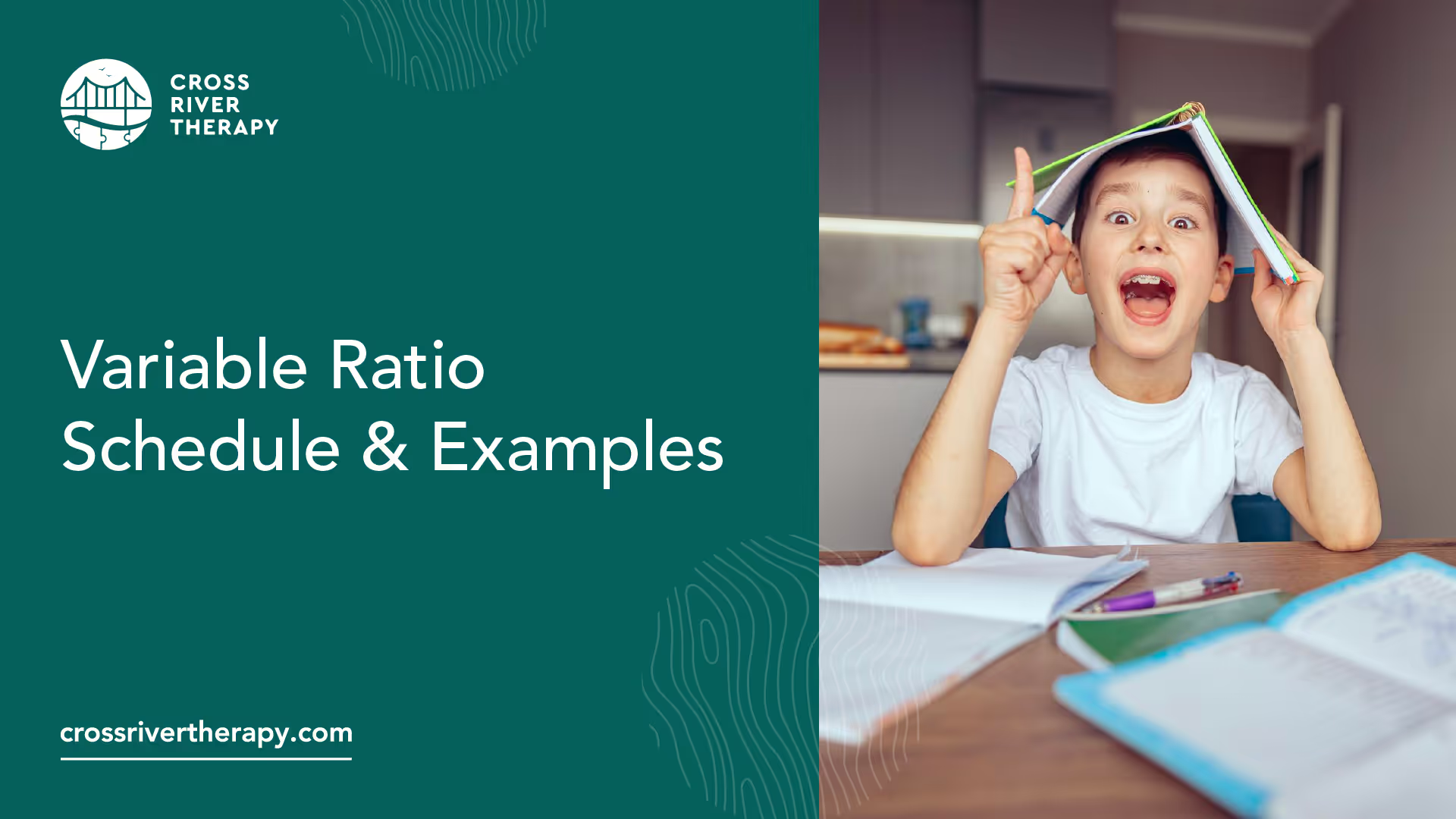Variable Ratio Schedule & Examples
A variable-ratio schedule is a random reinforcement where responses are reinforced following varied responses afterward.


What Is a Variable-Ratio Schedule?
A variable-ratio schedule is a random reinforcement where responses are reinforced following varied responses afterward.
Characteristics of Variable-Ratio Schedules
Three characteristics exist under a variable-ratio schedule.
Rewards are given after an unset number of responses are provided. There's no guessing about when rewards are handed out. It could be given immediately after the first response or the sixth one. It's completely random.
This can lead to higher rates of response in a quick time. When a patient isn't sure when a reward will be provided to them, they'll keep responding every time, hoping that the next time will be the one that brings them the rewards.
It also helps pauses stay very brief after the reinforcement is over. It's about the same as a variable-interval schedule in this manner. Both have very short post-reinforcement pauses.
How to Identify a Variable-Ratio Schedule
When pinpointing reinforcement schedules, it's useful to begin by knowing the name of the schedule. Under a variable-ratio schedule, the word variable is an indicator of reinforcement being delivered following unexpected responses.
The word ratio hints that reinforcement is provided later in a specified amount of responses. Collectively, the variable-ratio schedule is reinforcement being prescribed secondary to a variable amount of responses.
Variable-ratio schedules can be contrasted with fixed-ratio schedules, but better understanding. In the latter, reinforcement is given after.
For instance, an animal could be given a reward for responding every three times as a base average. One of those times, the reward could be administered after the third response, then the sixth, and continuing.
It'll be a reward for every three responses while being unpredictable to the subject. But in a fixed-ratio schedule, the reinforcement schedule could be set to four, making predictability easier to figure out.
Variable-Ratio Schedule Examples
Here are some examples of what variable-ratio schedule is carried out in different situations.
Example 1
Classrooms are perfect places for conducting a variable-ratio schedule. Students aren't able to tell when they'll be given a reward for turning in their homework. Because of this, more students will turn in their assignments on time than not, especially if the reward is something that the classroom would appreciate.
Example 2
People that play slots at a casino don't do so out of predictability. There's nothing they can do to tell when the winning spin will come, or how many spins it'll take to get there.
They do understand that eventually, at some point, there will be a winning jackpot. It can make quitting the machine difficult and even lead to addiction if players aren't careful.
Example 3
Variable-ratio schedules appear in social media online on two fronts. The first one is when one goes on their accounts not knowing if there will be any new notifications, likes, or comments.
Still, many continue checking throughout the day and night to see if something appears. The second is news feeds and news aggregates. People continue scrolling down the list or refreshing it to see if a new breaking story comes up on their screen.
Recent News
Related articles

Working With Autistic Children: 10 Career Options
Want to work with autistic children? Here are 10 career options for you to consider.

What Is The Age Limit For ABA Therapy In Indiana?
Find out what the age limit is for receiving Applied Behavior Analysis (ABA) therapy in Indiana.

What Is The Age Limit For ABA Therapy In Arizona?
Find out what the age limit is for receiving Applied Behavior Analysis (ABA) therapy in Arizona.

Verbal Operants In ABA: Definition & Examples
In Applied Behavior Analysis, verbal operants are a type of verbal behavior.

Token Economy: Examples & Applications in ABA
A token economy is a procedure that was developed to help reduce maladaptive behaviors and increased desire behaviors by providing a tangible conditioned reinforcer.

Trigger Analysis In ABA: Definition & Examples
Trigger analysis is a segment of ABA therapy where children are taught by therapists to pinpoint the behaviors and emotions that happen before, during, and after an event that takes place.

Variable Ratio Schedule & Examples
A variable-ratio schedule is a random reinforcement where responses are reinforced following varied responses afterward.

Task Analysis In ABA Therapy: Examples & Strategies
Task analysis is a process of teaching that divides complicated activities into sections involving easier steps for students to more easily take.

Stimulus Equivalence In ABA: Definition & Examples
Stimulus equivalence shows how relationships can manifest among different types of stimuli in different situations.

Speech Therapy For Autism: ABA vs. Speech Therapy
ABA therapy can help individuals with speech impairments learn to better identify and utilize the language skills they already have.

Stimulus Control Transfer ABA: Definition & Examples
Stimulus control is defined as an expression used to detail circumstances where a behavior is triggered by the existence or absence of a stimulus.

Social Validity In ABA: Definition & Examples
Social validity is the acceptance of interventions concerning behavioral changes.

